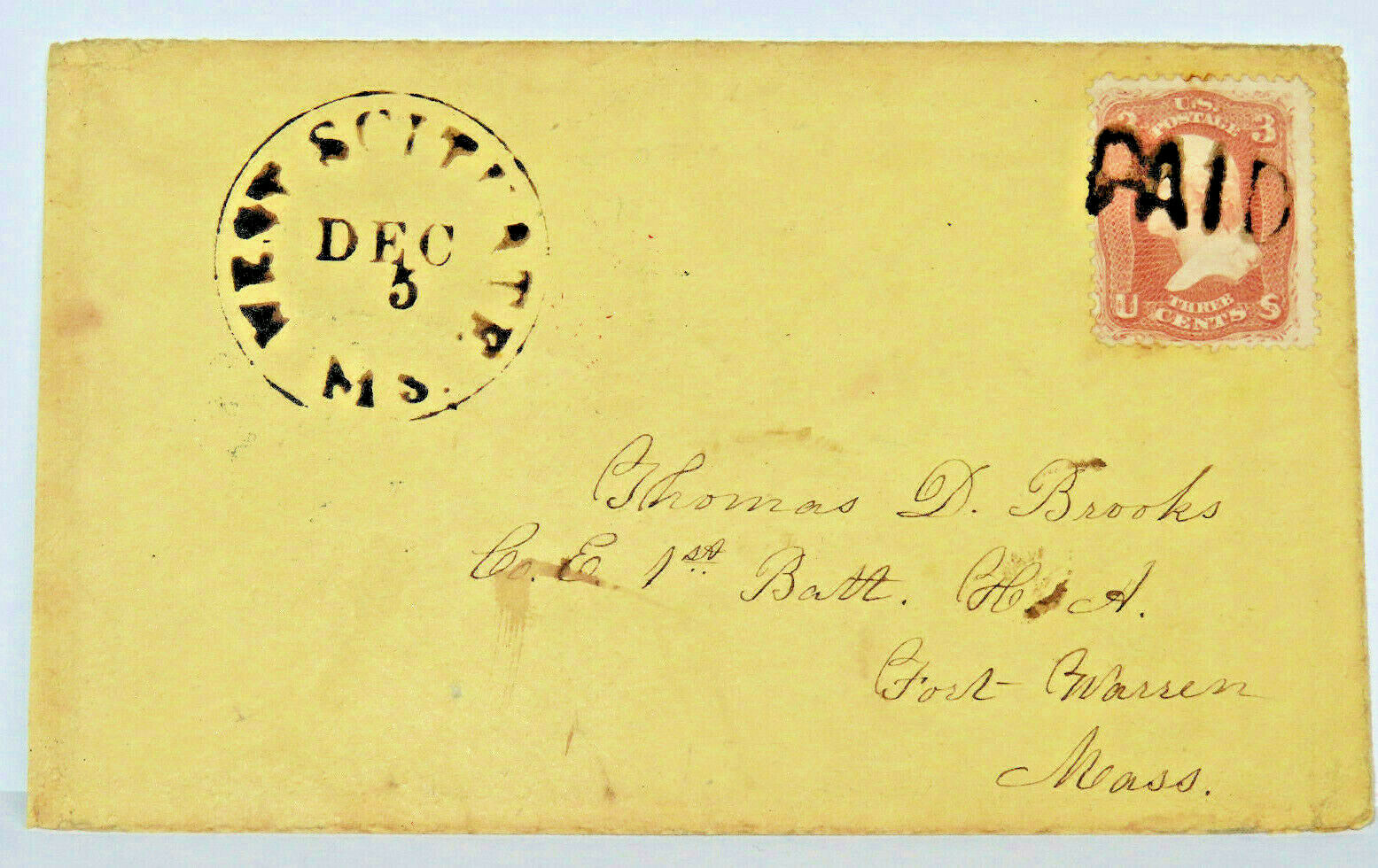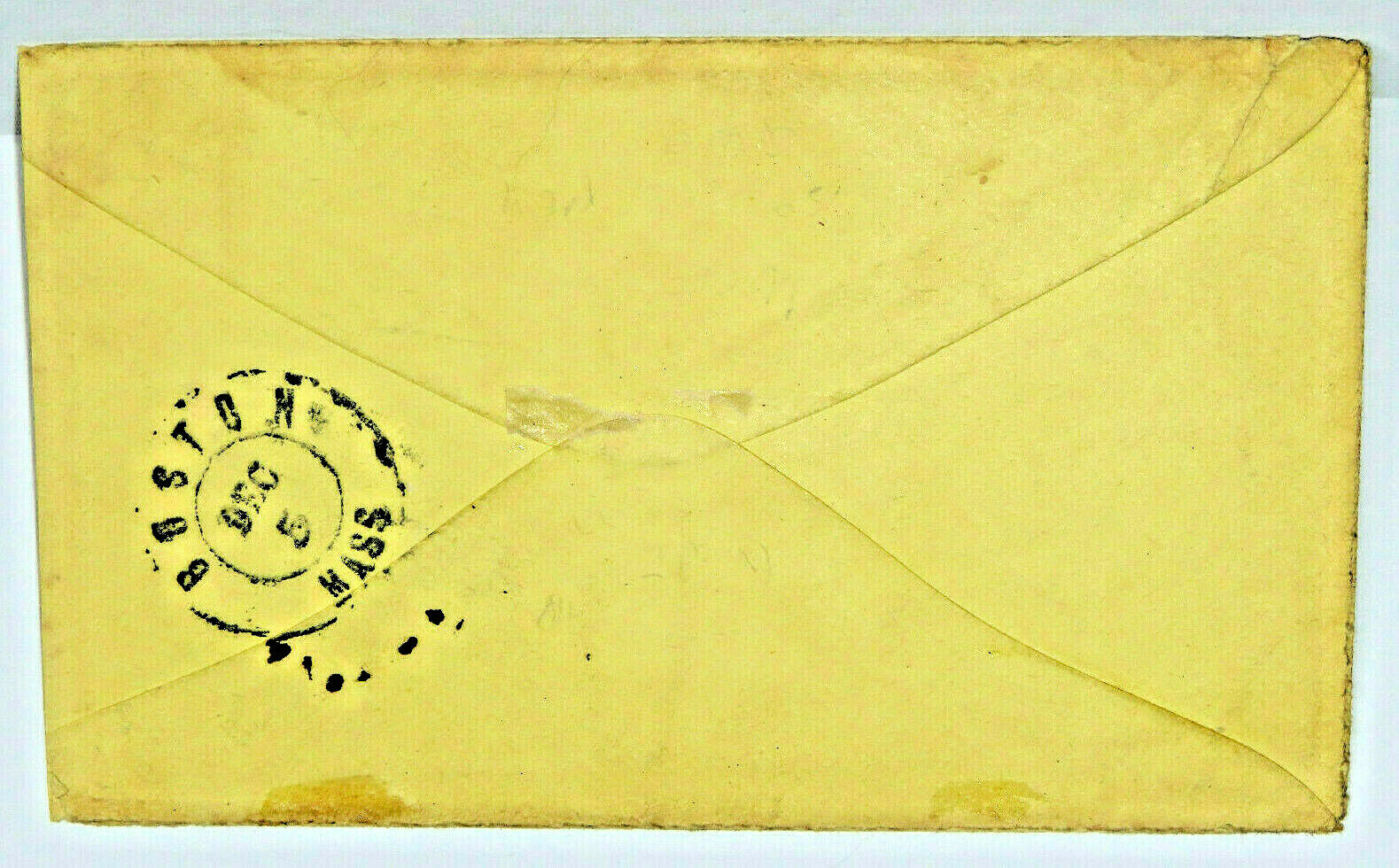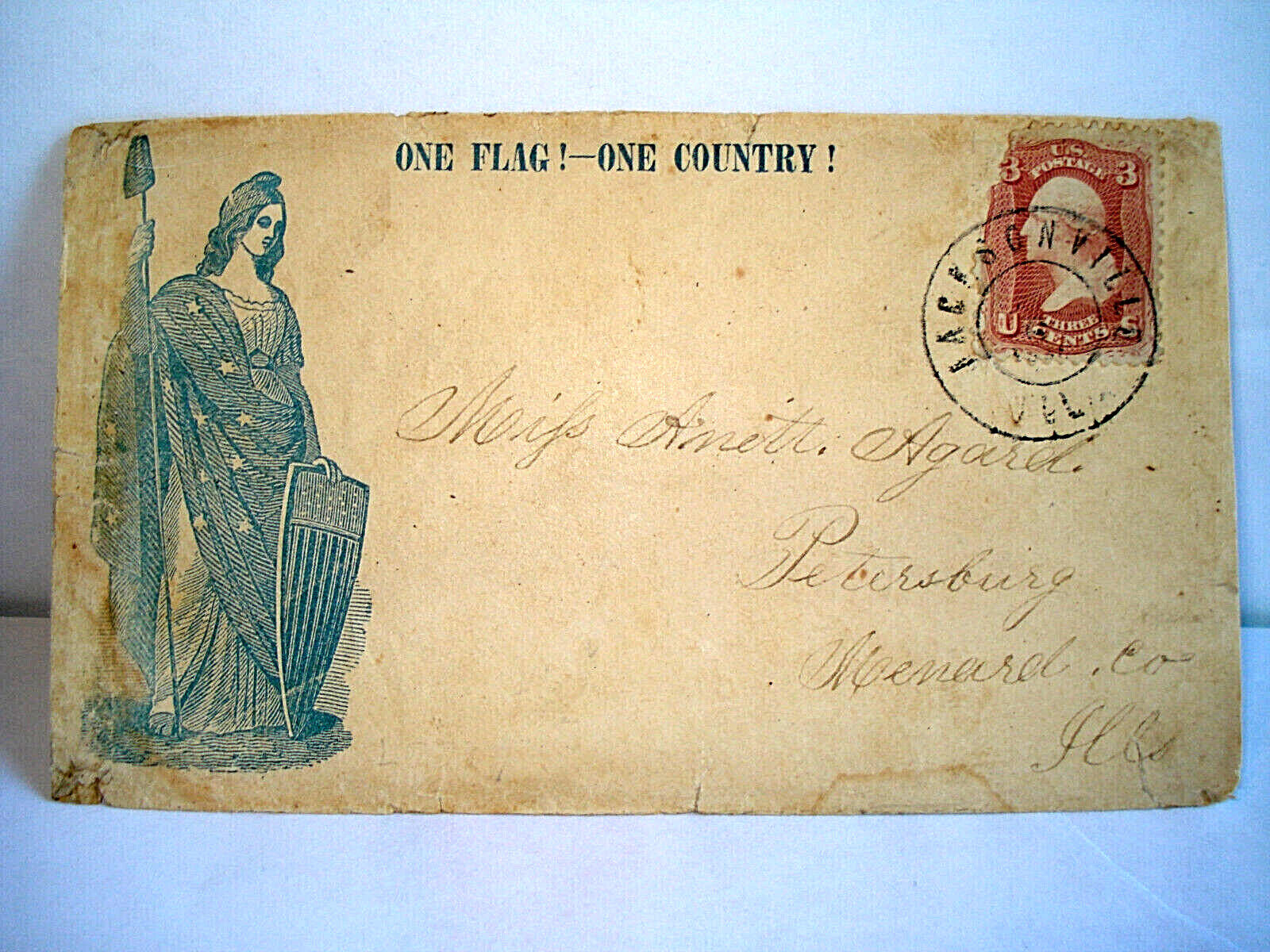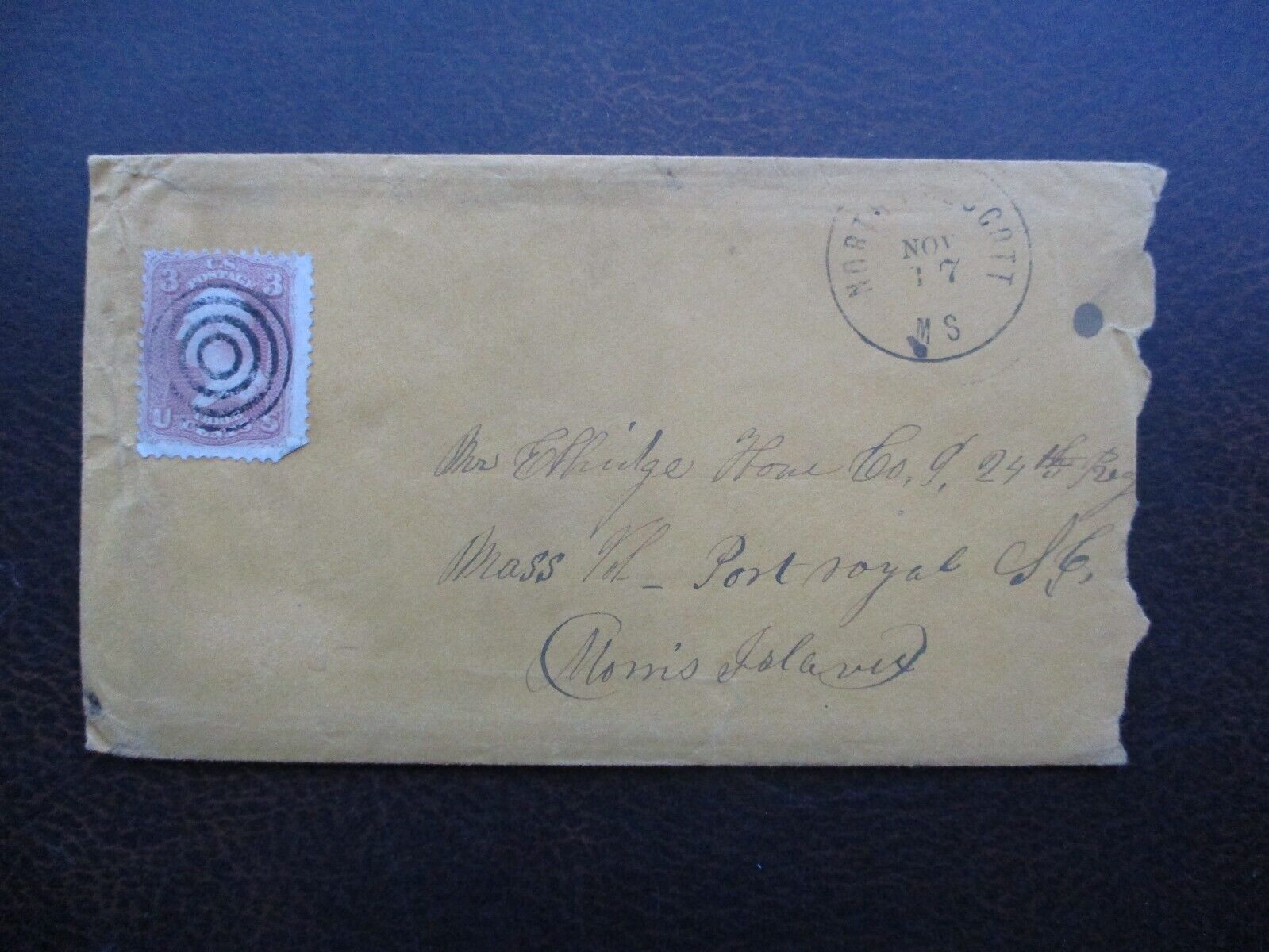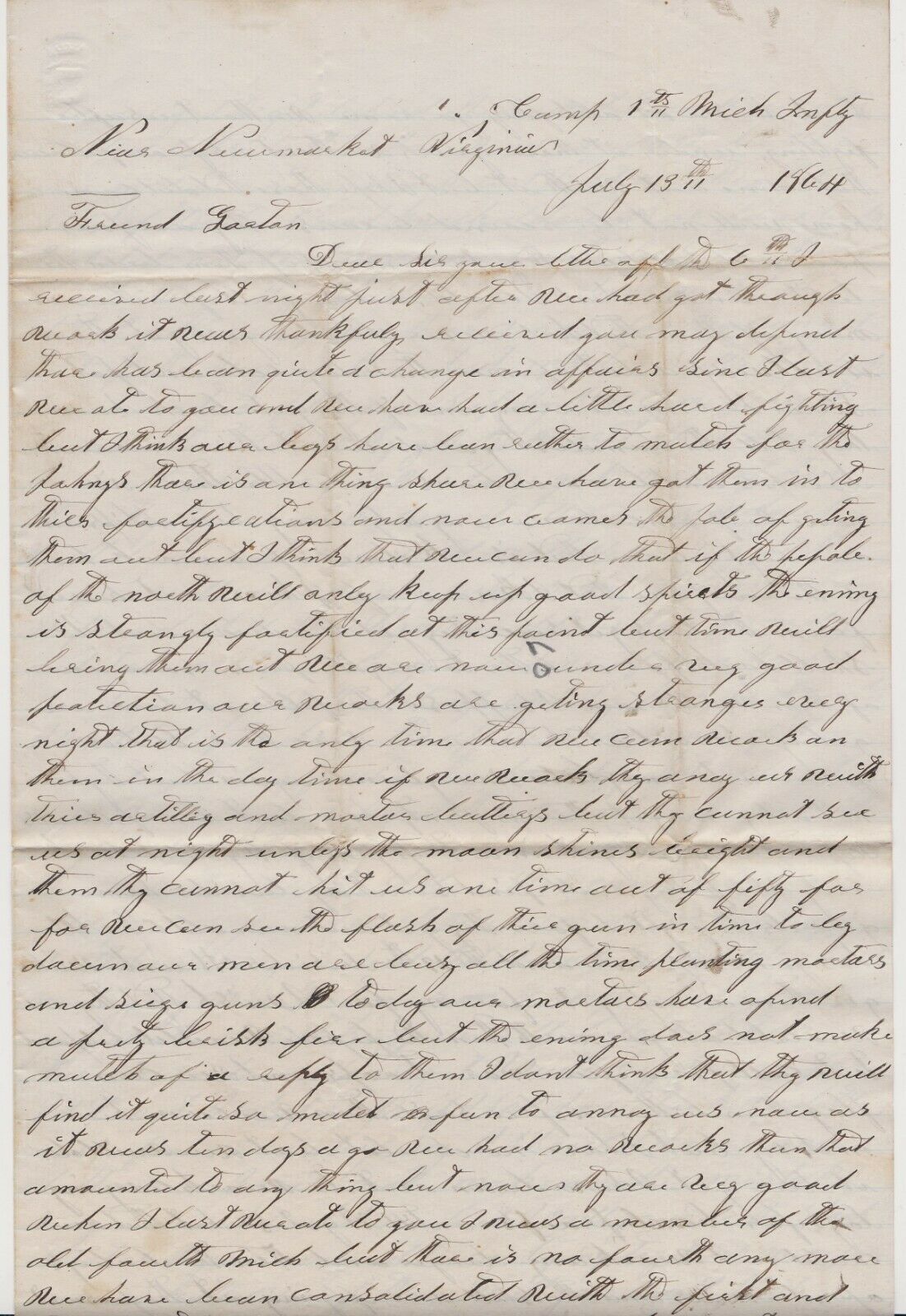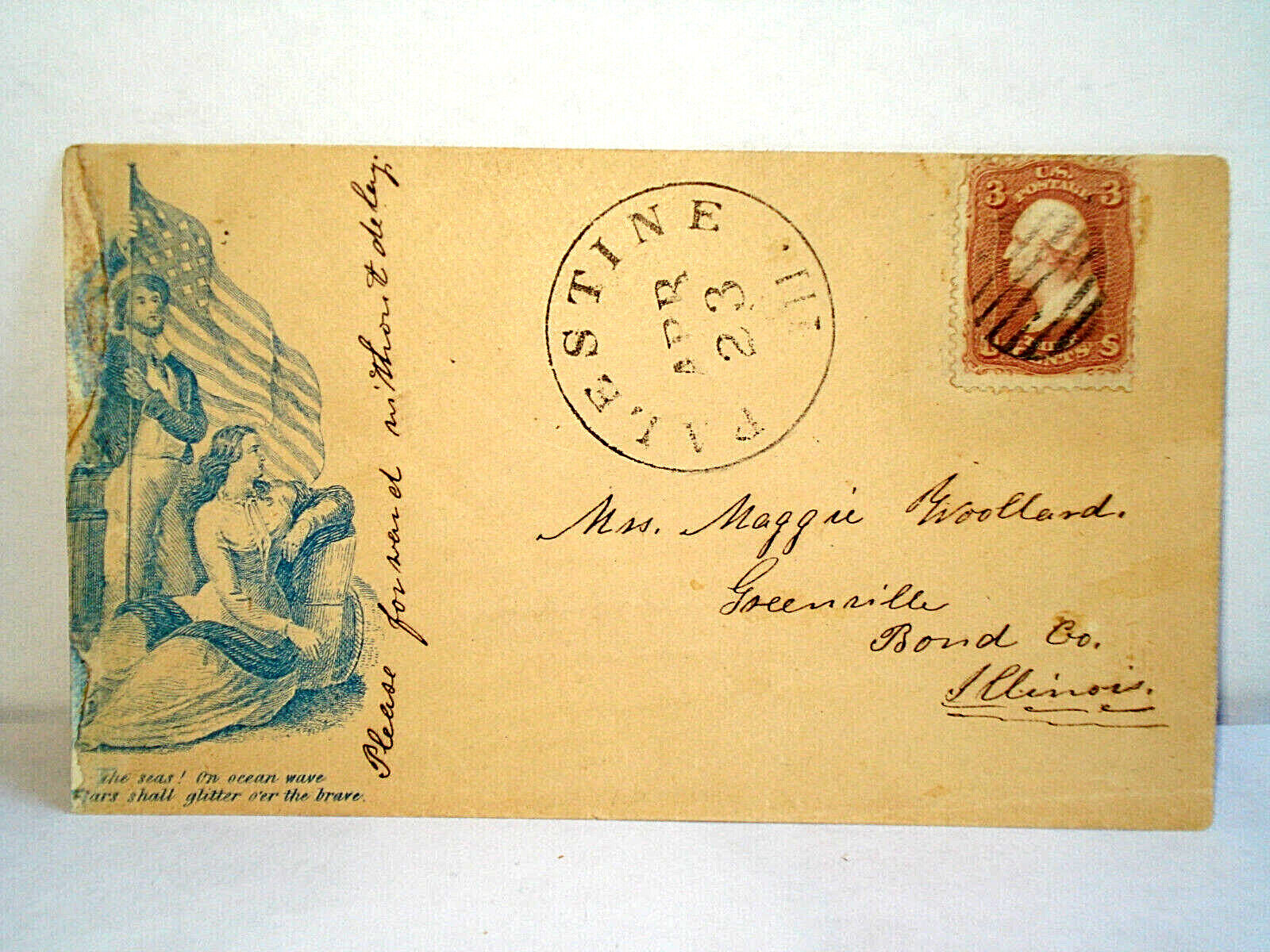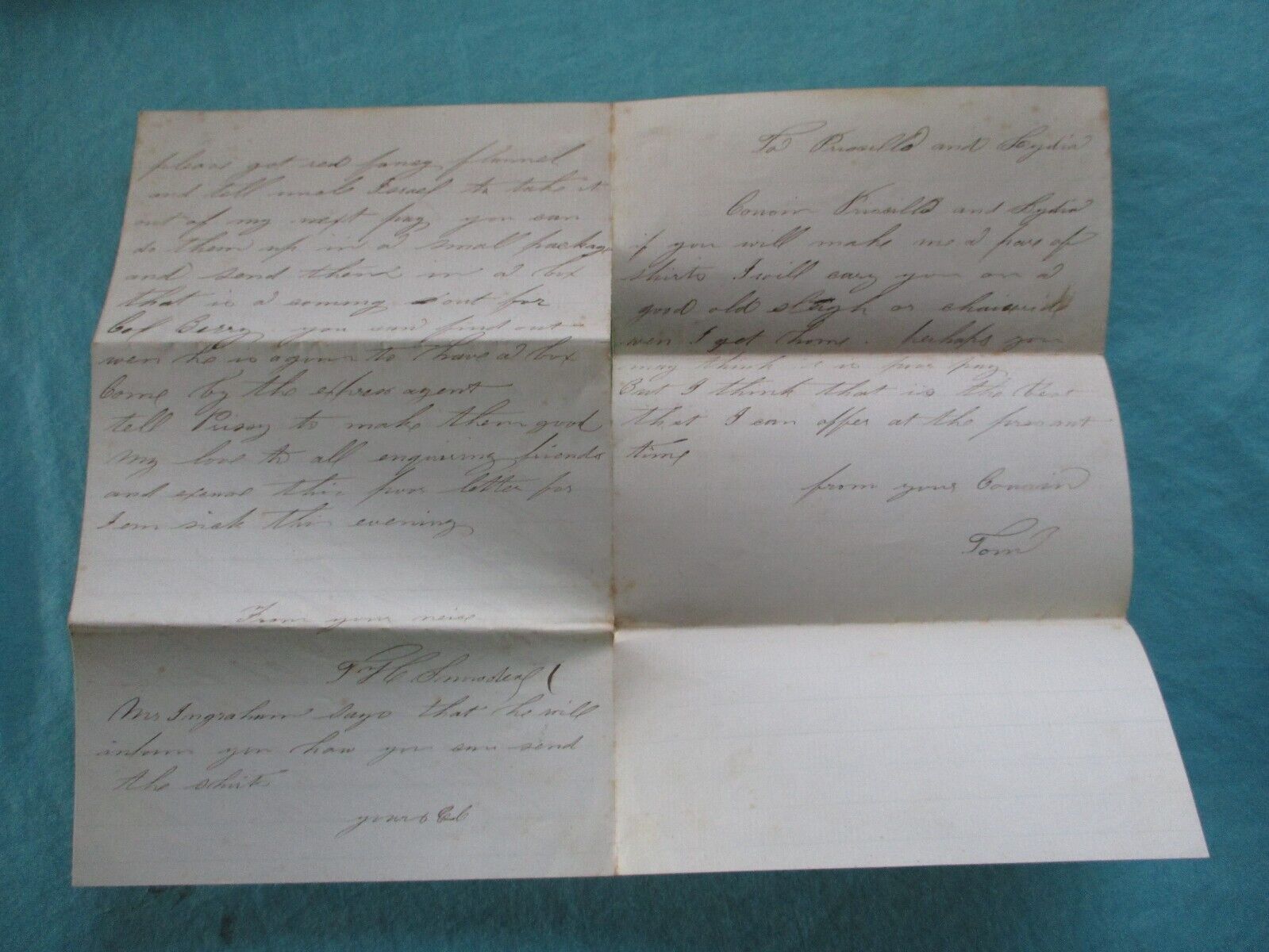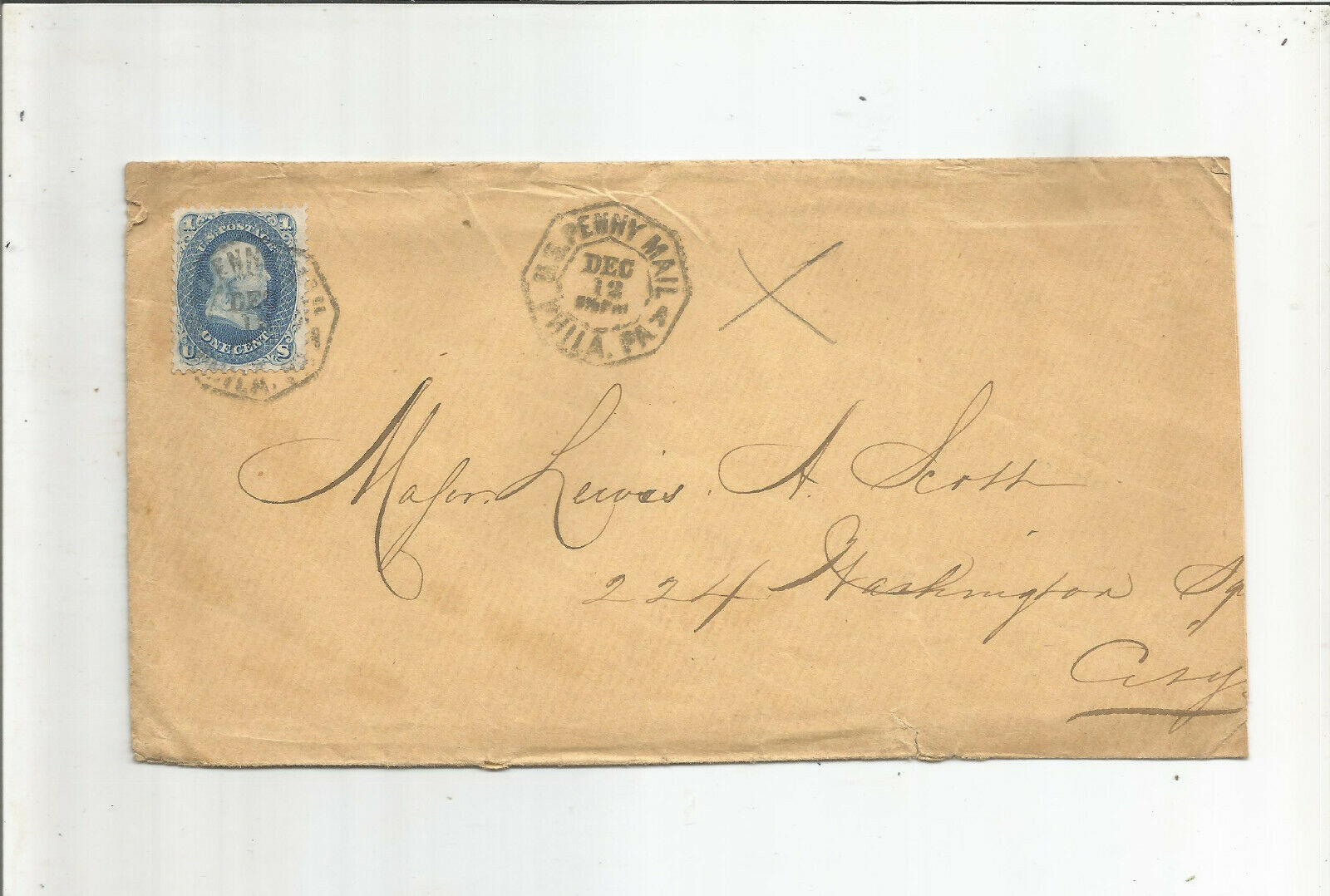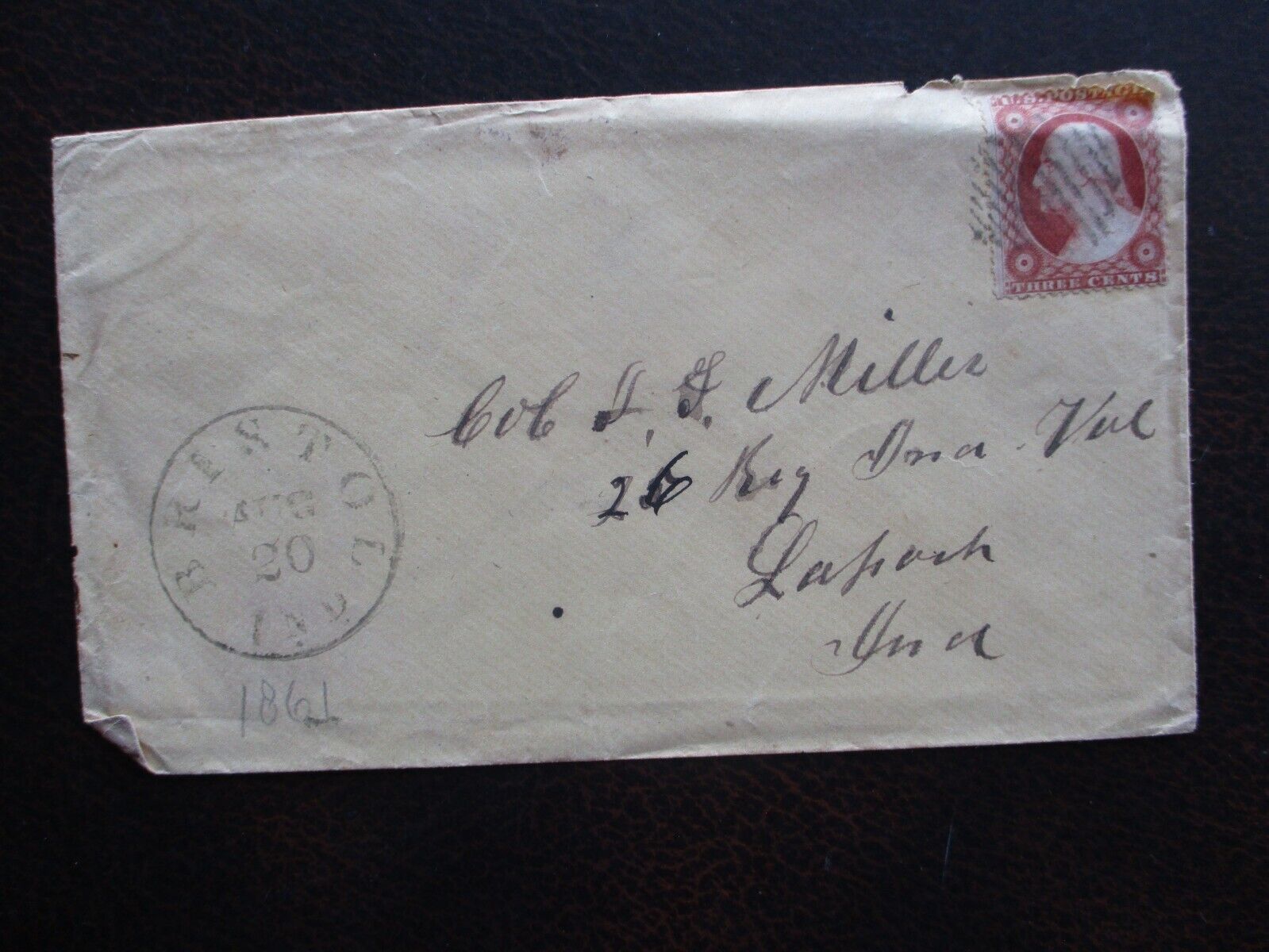-40%
👉Civil War 1st MASSACHUSETTS HEAVY ARTILLERY BATTALION Cover FORT WARREN
$ 15.83
- Description
- Size Guide
Description
Civil War1st MASSACHUSETTS HEAVY ARTILLERY BATTALION
Cover
FORT WARREN
.
INTERNET INFO:
https://en.wikipedia.org/wiki/Fort_Warren_(Massachusetts)
Fort Warren (Massachusetts)
Aerial photo of
Georges Island
and Fort Warren
Fort Warren
is a historic
fort
on the 28-acre (110,000 m
2
)
Georges Island
at the entrance to
Boston Harbor
. The fort is named for
Revolutionary War
hero
Dr. Joseph Warren
, who sent
Paul Revere
on his famous ride, and was later killed at the
Battle of Bunker Hill
. The name was transferred in 1833 from the first Fort Warren – built in 1808 – which was renamed
Fort Winthrop
.
[2]
Fort Warren is a
pentagonal
bastion fort
, made with
stone
and
granite
, and was constructed from 1833 to 1861, completed shortly after the beginning of the
American Civil War
.
Fort Warren defended the harbor in
Boston, Massachusetts
, from 1861 through the end of World War II, and during the Civil War served as a prison for Confederate officers and government officials, including Confederate Vice President
Alexander H. Stephens
.
The fort remained active through the
Spanish–American War
and
World War I
, and was re-activated during
World War II
. It was permanently decommissioned in 1947, and is now a tourist site. It was designated a
National Historic Landmark
in 1970 as a masterpiece of
coastal engineering
of the pre-Civil War period, and for its role in the Civil War.
Early history
Guardhouse (left) and sentry box (right) about 1861
Fort Warren was built from 1833 to 1861 and was completed shortly after the beginning of the
American Civil War
as part of the
third system of US fortifications
.
The Army engineer in charge during the bulk of the fort's construction was Colonel
Sylvanus Thayer
, who is best known for his tenure as Superintendent of the
United States Military Academy
at
West Point
, New York. It was the fifth largest of the 42 third system forts. The overall plan was pentagonal in shape, slightly irregular to make the best use of the island's terrain. The fort features excellent granite work. A demilune (half-moon) battery protecting the north sally port is a rare feature in US forts.
[3]
The fort was originally designed for over 200 guns, including some mortars and flank howitzers. During the Civil War it was armed with 15-inch and 10-inch
Rodman smoothbore guns
.
[4]
During the Civil War, the island fort served as a prison for captured
Confederate
army and navy personnel,
[5]
elected civil officials from the state of Maryland, and Northern political prisoners. The fort was commanded by Colonel
Justin Dimick
from 1861 to 1864. Dimick was noted for his humane and compassionate treatment of the Confederate prisoners held at the fort. Of over 1,000 Confederate prisoners at the fort, only 13 died there, giving Fort Warren a much lower mortality rate than any other prisoner of war camp (Union or Confederate) during the Civil War.
James M. Mason
and
John Slidell
, the Confederate diplomats seized in the
Trent
affair
, were among those held at the fort. Confederate military officers held at Fort Warren included
Richard S. Ewell
,
Isaac R. Trimble
,
John Gregg
,
Adam "Stovepipe" Johnson
,
Simon Bolivar Buckner Sr.
, and
Lloyd Tilghman
. High-ranking civilians held at Fort Warren include Confederate Vice President
Alexander H. Stephens
and Confederate Postmaster General
John Henninger Reagan
. The prison camp had a reputation for humane treatment of its detainees. When the camp commander's son, Lieutenant Justin E. Dimick, left Fort Warren for active duty in the field with the Second U.S. Artillery, he was given a letter from Confederate officers in the camp urging good care should he be captured. (He was later mortally wounded at Chancellorsville in May, 1863.)
The famous Union marching song
John Brown's Body
was written at the fort using a tune from an old Methodist camp song, and was performed at a flag-raising there on 12 May 1861. The song was carried to the Army of the Potomac by the men of the "Webster Regiment" (
12th Massachusetts Infantry
), who had mustered in at Fort Warren.
Julia Ward Howe
heard this song while visiting Washington, DC. At the suggestion of her minister, Howe was encouraged to write new words.
The Battle Hymn of the Republic
, which was initially published as a poem, was later matched with the melody of the "John Brown" song and became one of the best remembered songs of the Civil War era.
Post–Civil War through Endicott Period
12-inch gun on disappearing carriage, similar to those at Fort Warren.
In the 1870s Fort Warren was upgraded with new barbette batteries on the parapets along with a six-gun external battery; these were armed with
Rodman guns
.
[2]
A plaque at the fort states that the southeast bastion was roofed over at this time to create a rare (possibly unique)
casemated
15-inch Rodman gun battery. The massive brick arches built to enclose this bastion are impressive.
From 1892 to 1903 Fort Warren was rebuilt to accommodate modern breech-loading rifled guns under the
Endicott program
. Five batteries were added to the fort, replacing some of the older gun positions, as follows:
[4]
[6]
Name
No. of guns
Gun type
Carriage type
Years active
Adams
1
10-inch gun M1888
disappearing
M1894
1899–1914
Bartlett
4
10-inch gun M1888
disappearing
, 2 M1894, 2 M1896
1899–1942
Lowell
3
3-inch gun M1898
masking parapet
M1898
1900–1920
Plunkett
2
4-inch gun M1896
pedestal M1896
1899–1920
Stevenson
2
12-inch gun M1895
disappearing
M1897
1903–1944
The two 12-inch (305 mm) and five 10-inch (254 mm) guns were the fort's main armament against enemy battleships. For defense against smaller vessels, particularly to defend nearby
mine fields
against
minesweepers
, two 4-inch (102 mm) and three 3-inch (76 mm) guns were included. The 4-inch guns were a Navy design by
Driggs-Schroeder
, and in the whole US Army coast defense system only Fort Warren and
Fort Washington
in Maryland had this type of gun.
[7]
Battery Adams was built of low-quality concrete and was disarmed and abandoned due to deterioration in 1914.
[4]
World War I through World War II
Fort Warren was the headquarters of the
Coast Defenses of Boston
in World War I.
[2]
In 1917–1918 the four 10-inch guns of Battery Bartlett were removed for potential service as
railway artillery
on the
Western Front
. Contrary to some references, although some 10-inch guns were shipped to France to be mounted as railway guns, none appear to have been used in action in World War I.
[8]
Different 10-inch M1888 guns, including two from Battery Reilly at
Fort Adams
in Rhode Island and two from storage, replaced these weapons in 1919.
[4]
In 1920, with World War I over, several weapon types were withdrawn from Coast Artillery service. These included the 4-inch
Driggs-Schroeder
guns of Battery Plunkett and the 3-inch
Driggs-Seabury
guns of Battery Lowell. None of these were replaced.
[4]
The 4-inch guns at Fort Warren remained as display pieces at least through 1941.
[7]
During World War II, the fort served as a control center for Boston Harbor's south
mine field
, a precaution taken in anticipation of potential attacks by
Kriegsmarine
U-boats
.
[9]
At that time, Fort Warren was garrisoned by the
241st Coast Artillery Regiment
(Harbor Defense), a
Massachusetts National Guard
unit that was federalized in September, 1940. As new 16-inch batteries were built, particularly Battery Murphy at the
East Point Military Reservation
, Fort Warren's remaining guns were scrapped in 1942–1944. Fort Warren was permanently decommissioned after 1950. At some point an emplacement of Battery Bartlett was demolished for an access road.
Decommissioning and opening to the public
The parade ground of Fort Warren. Cannon once were mounted on the granite bases in the foreground.
Fort Warren was owned by the
U.S. federal government
until 1958, when the state obtained it from the
General Services Administration
. In 1961, the fort was reopened to the public after initial
restoration
.
Today, the
Massachusetts Department of Conservation and Recreation
maintains and administers the fort, which is the centerpiece of the
Boston Harbor Islands National Recreation Area
. The fort is reachable by ferry from downtown Boston, Hingham, or Hull to Georges Island. Transfers are then available for those who wish to visit some of the other Harbor Islands.
The fort is typically open from early or mid May through Columbus Day weekend. DCR Rangers offer guided tours, or you may explore on your own. An information booth just outside the sally port (the main entrance to the fort) posts information about available activities. The island offers a well-stocked snack bar, water fountains, and a large number of composting toilets. There is also a museum located in the old mine storehouse (the red brick building opposite the ferry dock), a number of picnic tables, and a children's play structure. The tops of several of the walls and several of the casemates and magazines beneath them are open to visitors. The dock side of the fort features two Civil War
3-inch rifled guns
converted to breechloaders. 10-inch Rodman guns, projectiles from the Endicott era, and two World War II
40 mm Bofors guns
are also at the fort. The museum includes a demonstration model of a disappearing gun and a
Nike-Ajax
missile.
Confederate memorial
The Commonwealth's only Confederate memorial, a headstone which commemorates 13 southern soldiers who died while imprisoned during the Civil War at the fort was housed on the island until 2017. It was removed then removed and placed into storage at the
Massachusetts Archives
. The headstone marker was installed in 1963 by the Boston Chapter of the
United Daughters of the Confederacy
. Governor
Charlie Baker
called for the removal of the memorial in June 2017.
[10]
The state subsequently covered over and removed the monument in October 2017 and stored it in the Massachusetts State Archives.
[11]
[12]
[13]
https://en.wikipedia.org/wiki/1st_Massachusetts_Heavy_Artillery_Battalion
The
1st Battalion of Massachusetts Volunteer Heavy Artillery
was a unit that served in the
Union Army
during the
American Civil War
. It was organized from several unattached companies of
heavy artillery
already raised and mustered into a three-year service for the defenses of the
Massachusetts
coast.
History
Company A
The 1st Unattached Company was formed in February 1862 for the garrisoning of
Fort Warren
in
Boston Harbor
. They remained here until 24 December 1864, when ordered to
Champlain, New York
due to "trouble being feared on the Canadian border".
[1]
They returned to Fort Warren on 13 May 1865, and were mustered out on 20 October. Captain Stephen Cabot of this company would become the major of the battalion.
Company B
The 2nd Unattached Company was organized in October and November 1862, joining the 1st in garrison duty at Fort Warren. In July 1863, when a draft riot broke out in
Boston
, they were sent to restore order. In August, they were stationed at the
Fort at Clark's Point
,
New Bedford
, and remained there until its mustering out on 29 June 1865.
Company C
The 4th Unattached, being mustered in on 22 April 1863, then became Company C when the battalion was formed that month. They were also stationed at Fort Warren during most of their term of service. During the Boston draft in July, the company was sent there to maintain order, except for a detachment that went to
Concord, New Hampshire
to assist in keeping order during the draft taking place there, and stayed until September. The company was mustered out on 20 October 1865.
Company D
The battalion being formed by the three mentioned unattached companies at the end of April 1863, they were later joined by the 5th Unattached Co. after it was mustered in on 6 June 1863 and became Company D.
The four previously unattached companies were three-year units, and two additional companies (Companies E + F) were subsequently raised in August 1864 for one-year terms. Except where mentioned previously, the companies were all stationed at forts in Boston Harbor, with detachments from them being sent to other military locations along the coast.
Three of the companies were mustered out in June 1865, while the rest of the battalion stayed in service until September and October.
Complement
The First Battalion consisted of 39 officers and 1272 enlisted men.
[2]
Losses
The 1st Massachusetts Heavy Artillery lost 9 officers and 232 men were killed or died of wounds. 2 officers and 241 men died of disease or accidents.
[3]
SATISFACTION GUARANTEED
We want you to be happy with your purchase.
We offer a 14 day return on any item that you find is not as described. Please give us a chance to make it right if you feel that we have made an error.
Please ask all questions prior to bidding or buying.
We reserve the right to cancel any bids that we think was not made in good faith. By placing a bid or making a purchase from us means that you the buyer agrees to all terms applied on this listing set by Ebay Inc.
We only sell original authentic material.
We are buyers, sellers, and collectors of interesting philatelic & numismatic material. We are life members of the ANA, APS, & CWPS.
"Delivering guaranteed satisfaction on Ebay since 2002.
US SHIPPING
We combine shipping on multiple purchases. Please wait before paying in order to receive a
discount on combined shipping
. We will provide a
tracking number
for your purchase.
WORLDWIDE SHIPPING
We
DO NOT
SHIP OUTSIDE OF THE US
. However, we do use
EBAY GLOBAL SHIPPING
whereby Ebay charges you a fee to guarantee a safe and timely delivery of your package. Please contact Ebay for your country's rate.
All fees collected from Ebay's global shipping goes to Ebay, Inc. not the seller.
PAYMENT
WE GLADLY ACCEPT PAYPAL
as well as other forms of payments set by Ebay's managed payments.
Please pay for your purchase within
3
days
. Ebay will automatically send payment reminders; so please disregard if payment has already been made.
Any and all state taxes collected from Ebay via your invoice goes to your state tax office not the seller.
Please contact Ebay with any local and state tax questions before bidding/buying.
